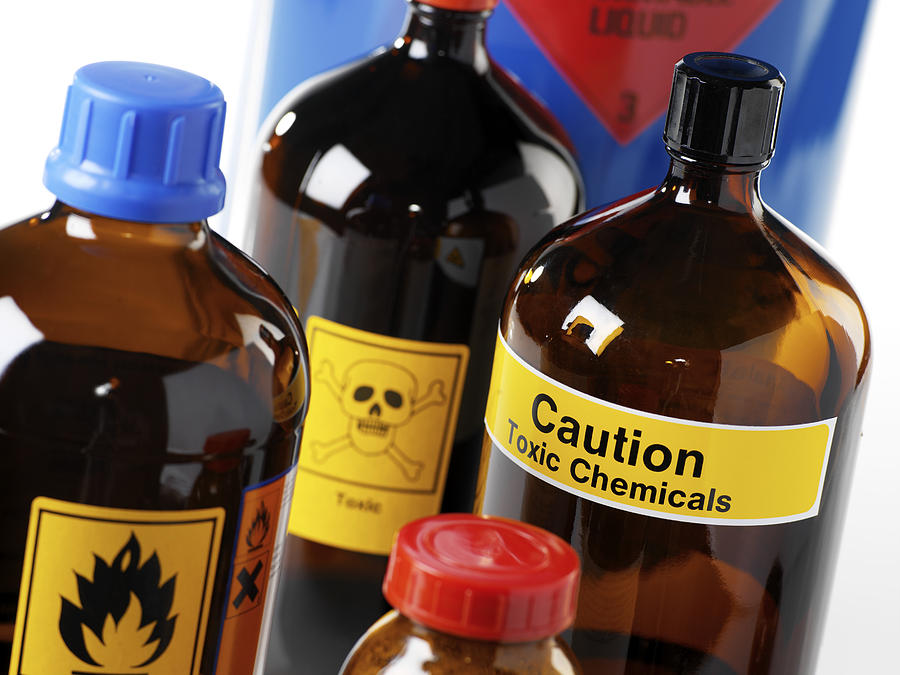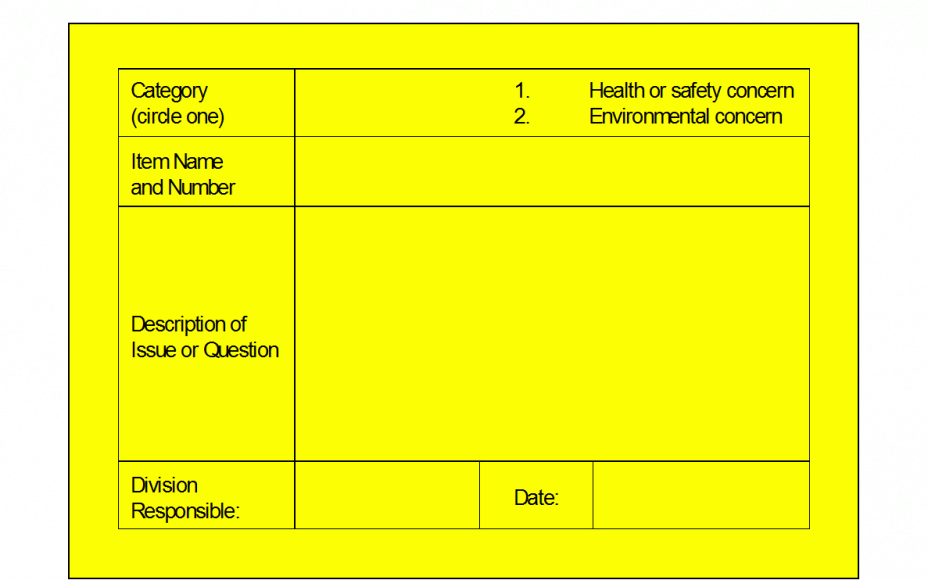The Four Steps of Yellow-Tagging
Step 1: Identify Yellow-Tag Targets AND CRITERIA
Two types of targets should be identified:
- The physical areas where tagging will take place
- The specific types of items that will be evaluated

- Potential items to consider yellow-tagging include:
- EHS hazards in the workplace
- Chemicals and other hazardous materials
- Environmental wastes
After choosing targets, your team should agree on criteria for evaluating yellow-tagged items. You can continue to use red-tagging and your company’s red-tag criteria to determine whether an item is needed in the work area based on its usefulness for the work at hand, the frequency with which it is used, and the quantity that is needed. For yellow tags, you may want to use criteria related to the risk of an item, the availability of alternative materials or equipment, or to an opportunity for improved environmental performance.
Yellow tags can serve as warning tags that alert workers about existing or potential hazards in the work area or that identify potential areas to target for improvement in the future. For example, a yellow tag on a chemical could cause you to ask whether a less toxic material could be used for the same purpose. Similarly, a yellow tag on an item in a red-tag holding area could indicate that the item needs to be treated differently for disposal or reuse because of its risk.
Step 2: Make and Attach Yellow Tags
Can be as simple as yellow sticky notes stating the reason for the yellow tag
Can contain standard data that your company uses for tracking materials
Key is to include data that will allow your company to evaluate performance improvements from 6S and support your company’s overall materials tracking system

Example of a Yellow Tag
Step 3: Evaluate and Address Yellow-Tagged Items
If you find an EHS issue during yellow-tagging, ask “why” five times to identify the root cause of it
Then ask “how” to address the root cause
If an item is both unnecessary (red-tagged) and hazardous (yellow-tagged), follow appropriate procedures for disposal of hazardous wastes
If items are yellow tagged but not a red tagged (i.e.necessary but hazardous), find out if you can avoid using those materials or if there is a less toxic alternative
STEP 4: DOCUMENT AND SHARE THE RESULTS
Document necessary information from the yellow-tagging process in a log book or other system
Track the improvements and savings that have resulted from yellow-tagging
Share your results with others to show what you have achieved and to generate ideas for future improvements
